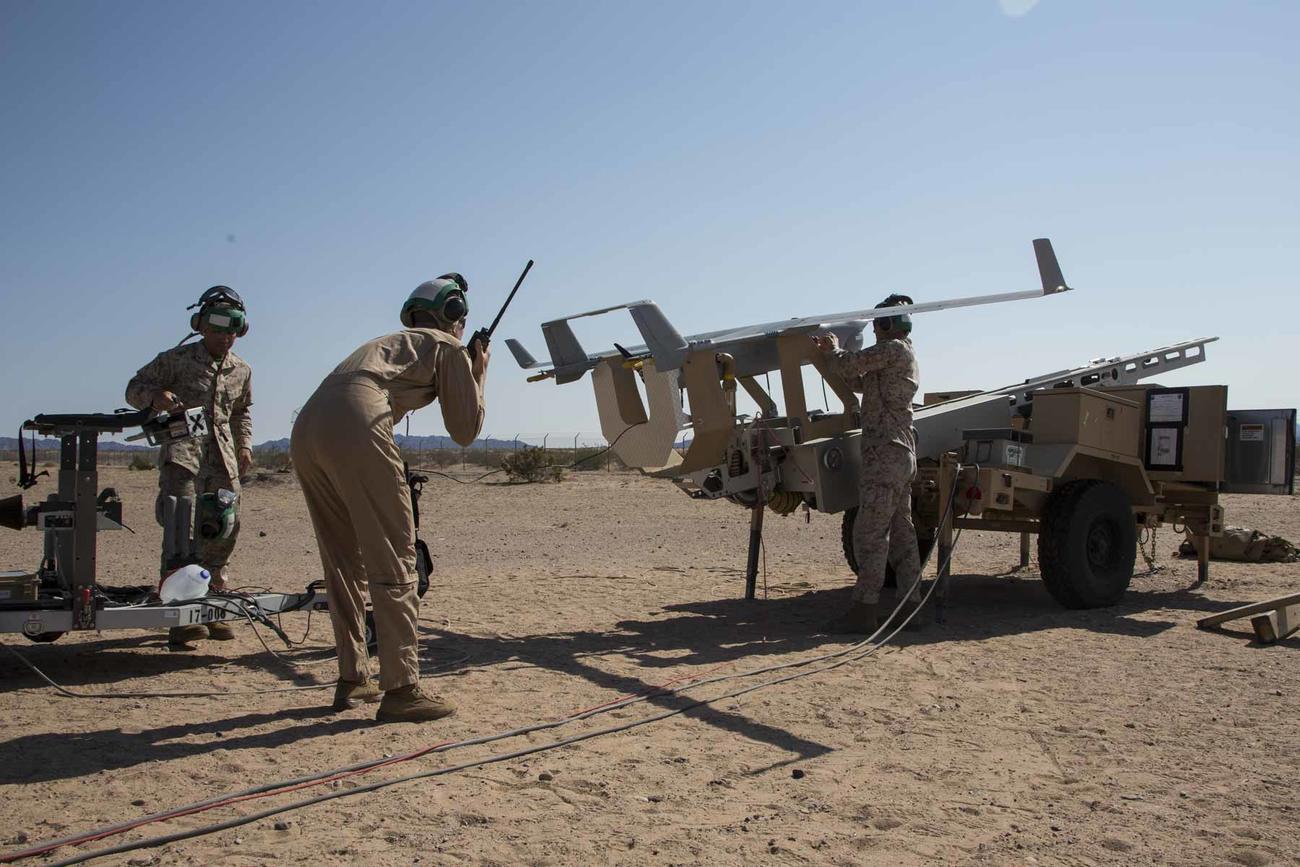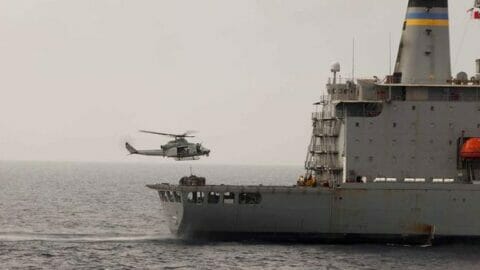
Marine leaders are laying out a more detailed and concrete vision for the use of unmanned platforms and drones that includes things like robot-driven supply lines and robot combat in the wake of the huge maritime exercise in the Pacific.
Speaking to reporters from Defense One during a panel Thursday, Brig. Gen. Joseph Clearfield, the Corps’ deputy commander for its Pacific forces, explained that leaders are “looking at … a future where we’re able to use robots in the lethal mission.”
“I think we’re looking at being able to use them for missions to hold them much more at risk and then use robots to destroy other robots,” Clearfield said. “That is where our experimentation has taken us.”
Read Next: Women Still Unable to Break Glass Ceiling of Navy SEAL Qualifications
The Marine Corps’ top officer, Gen. David Berger, went even further and explained that he sees a future where unmanned and robotic vehicles make up part of the logistics chain that would keep Marine units supplied while they fight on remote islands.
Berger explained that, in his view, unmanned platforms will soon allow Marines “to conduct tactical and operational logistics … because if you have the data, you know where the units are, it’s tracking, it’s going to know where certain things are needed at a certain point in time and geography in the future.”
“The fuel, the munitions can be moved to them to meet them there at the right place and time, all autonomously,” Berger explained.
Ever since the Marine Corps began to pivot from its War on Terror orientation as an “elite counterinsurgency force” to one that places greater emphasis on its amphinbious roots and island-hopping tactics, there has also been a greater focus on how Marines on those islands would be supplied.
Drones now appear to be taking a greater role in those plans.
“Our commandant has talked about using them to move logistics … petroleum, oil and lubricants, freshwater, munitions,” Clearfield said.
Berger also talked about plans to utilize unmanned and autonomous vehicles to transport wounded troops. He put forward a scenario that involved a “helicopter that flies in to pick you up.”
“There may be medics, corpsmen in the back of that vehicle or in the back of that aircraft, but nobody’s flying,” he added.
Despite the grand plans that leaders are laying out, many of the capabilities that are currently being suggested have not been developed or tested.
During the recent Rim of the Pacific (RIMPAC) exercise — a biennial, multi-country event held in Hawaii and San Diego that is billed as the largest in the world — there were only four prototype unmanned surface vessels among the 38 ships. According to a Navy press release, the four drones were “carrying payloads, providing intelligence, and most significantly, gathering data in a real-world environment.”
The Marine Corps has continued to grow its arsenal of MQ-9 Reaper drones, but even Berger admits “it’s not a new platform.” He sees it as paving the way for bigger capabilities down the road.
Yet, even if the technology develops as leaders hope, there are other issues to iron out. For example, the recent attempted theft of three of the Navy’s drone ships by Iran has raised questions about the efficacy and security of the platforms.
Plus, Congress hasn’t signed up to pay for the new technology yet. Last year, lawmakers nixed the Navy’s plan to buy more drone ships over concerns the platforms were unproven and the service had not laid out enough of a strategy.
A committee aide told reporters last year, “If you look at [the Navy’s] acquisition strategy, there’s really no gap between what they’re calling these prototype ships and when they go into actual serial production.
“We don’t believe that’s a sound strategy,” the aide said, adding that lawmakers were worried about a repeat of the now-controversial littoral combat ship program.
— Konstantin Toropin can be reached at konstantin.toropin@military.com. Follow him on Twitter @ktoropin.
Related: After a Barrage of Editorials and Critiques, Marine Leaders Defend Restructuring Plan
Show Full Article
© Copyright 2022 Military.com. All rights reserved. This material may not be published, broadcast, rewritten or redistributed.
Tags: Corps Kill Marine Marine Corps Marine Corps News Military Planning Robots Wars Working Warriors









